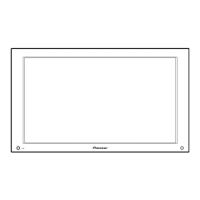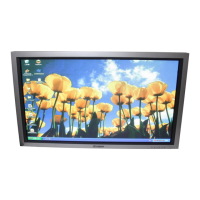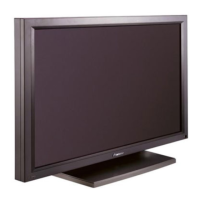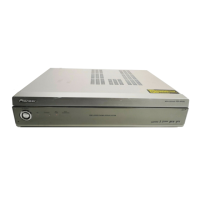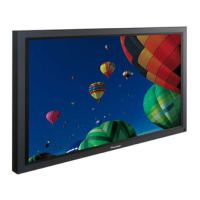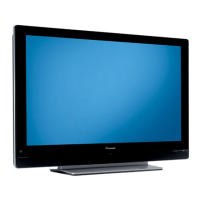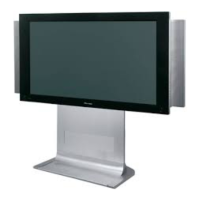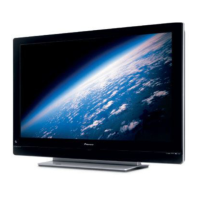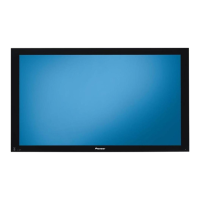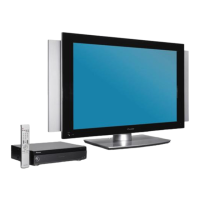
Do you have a question about the Pioneer PDP-435FDE and is the answer not in the manual?
| Depth | 93 mm |
|---|---|
| Width | 1120 mm |
| Weight | 26800 g |
| Tuner type | Analog |
| Pixel pitch | - mm |
| Aspect ratio | - |
| Product color | Aluminium, Black |
| LED indicators | Y, Power |
| Noise reduction | Yes |
| RMS rated power | 26 W |
| AC input voltage | 220 - 240 V |
| Display diagonal | 43 \ |
| Channels quantity | 99 channels |
| AC input frequency | 50 - 60 Hz |
| Built-in subwoofer | No |
| Display brightness | - cd/m² |
| Display resolution | 1024 x 768 pixels |
| Display technology | Plasma |
| Number of speakers | 2 |
| Teletext standards | Top-text |
| Placement supported | Horizontal |
| SCART ports quantity | 3 |
| USB 2.0 ports quantity | 0 |
| Contrast ratio (typical) | 1200:1 |
| Annual energy consumption | - kWh |
| Screen format adjustments | 4:3, 14:9, 16:9, Zoom |
| Analog signal format system | NTSC, NTSC 3.58, NTSC 4.43, PAL, PAL 60, PAL BG, PAL DK, PAL I, SECAM, SECAM B/G, SECAM D/K, SECAM L |
| Power consumption (standby) | 0.4 W |
| Power consumption (typical) | 295 W |
| Sound enhancement technology | FOCUS, SRS, TruBass |
| On Screen Display (OSD) languages | DEU, DUT, ENG, ESP, FIN, FRE, GRE, POR, RUS, TUR |
General recommendations for optimal use and screen longevity to prevent after-image effects.
Precautions and steps for safely mounting and installing the Plasma Display to prevent tipping.
Essential safety rules for operating and handling the product to prevent injury or damage.
Specific safety advice for installing the Plasma Display using stands or brackets.
Guidelines for proper operation, cleaning, and environmental considerations to prevent issues.
Lists all accessories included with the Plasma Display unit.
Lists all accessories included with the Media Receiver unit.
Identifies and explains the physical parts and connection terminals of the Plasma Display.
Identifies and explains the physical parts and connection terminals of the Media Receiver.
Details the functions and layout of the remote control unit buttons.
Instructions for positioning and setting up the Plasma Display unit.
Instructions for positioning and setting up the Media Receiver unit.
Steps for installing the Media Receiver in a vertical orientation using the provided stand.
Guide to connecting the system cable between the Plasma Display and Media Receiver.
Instructions on how to manage and secure cables using provided accessories.
Steps for inserting batteries and understanding remote control operation range.
Essential steps for connecting the antenna cable and power cord to the system.
Procedures for turning the Plasma Display system on and off.
How to switch between TV channels using the remote or unit buttons.
Guide to registering and selecting favorite analogue TV channels.
Instructions for controlling volume and muting the sound.
Explains how to select different sound modes for broadcasts.
How to capture and freeze a single frame from a moving image.
General procedure for accessing and navigating the system's setup menus.
Guide to automatically scanning and setting up TV channels.
Steps for manually tuning and setting up analogue TV channels.
How to assign names (labels) to TV channels for easier identification.
How to enable or disable the Child Lock feature to restrict channel access.
How to select the correct input terminal for a connected decoder.
Procedure for setting the system's internal clock.
How to select the display language for menus and Teletext.
How to choose picture modes for optimal viewing.
Fine-tuning basic picture settings like contrast, brightness, colour, and tint.
Accessing advanced picture optimization features like PureCinema.
Adjusting colour balance, contrast enhancement, and noise reduction.
Fine-tuning individual colour hues for precise colour reproduction.
Adjusting audio settings like treble, bass, and balance for preferred sound.
Enhancing sound directionality and creating immersive surround effects.
Managing power saving features and automatic standby modes for efficiency.
Adjusting the horizontal and vertical placement of images on the screen.
Specifying the video signal type received from connected external equipment.
Selecting the appropriate colour system for clear image display.
Changing the picture aspect ratio for optimal display.
Enabling automatic screen format switching based on broadcast signals.
Selecting display formats for 4:3 signals, including side masks.
Adjusting the brightness of the grey side masks in specific aspect ratio modes.
Setting a timer to automatically turn the system off or into standby.
Setting, changing, or disabling the system password for security.
Detailed procedures for managing the system password, including reset and disable.
How to connect and display images from external decoder devices.
How to connect and display images from VCRs, including AV link features.
Activating and configuring HDMI input for digital video and audio signals.
Utilizing i/o Link.A for advanced connections and features with VCRs or DVD recorders.
How to connect and display images from external DVD players.
How to connect game consoles or camcorders for viewing images.
How to connect external audio equipment like AV receivers for enhanced sound.
Introduction to Teletext, how to turn it on/off, and basic display modes.
Methods for navigating and selecting Teletext pages using remote control buttons.
How to view subpages and manage automatic subpage display.
How to display subtitle information transmitted with broadcasts.
Viewing the TOP Over View screen for Teletext navigation.
Common problems and their solutions for the Plasma Display and Media Receiver.
Detailed pin assignments for SCART connections (INPUT 1, 2, 3).
Technical details and specifications for the Plasma Display and Media Receiver.


